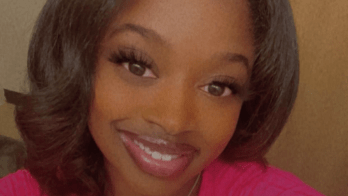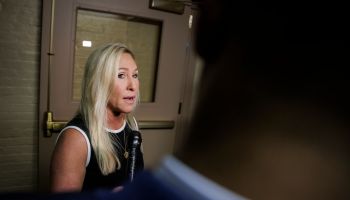From the Wall Street Journal:
When Barack Obama sat down with Russia’s ITAR-Tass news agency last summer, the reporter concluded the interview by presenting the president with nesting dolls of American politicians. “Only Democrats inside,” the reporter said reassuringly, “No Republicans.”
“Excellent,” replied Mr. Obama, laughing.
The president probably wouldn’t have minded either way, but, if only inadvertently, the Russian purge of Republicans is expressive of a trend among those who give and receive dolls: an intensifying concern with matching the characteristics of the figurine with those of its owner.
RELATED: Mattel Introduces Black Barbies With More “Authentic Features”
Some children, of course, have always yearned for a doll that looks just like them, with the same eye and hair color and, for the luckiest, even a matching set of clothes. More commonly, children have enjoyed dolls not for narcissistic satisfaction but for their imaginative potential as hand-held adventurers that can be moved about and made to talk or fly. A corncob doll works as well for those purposes as a custom-made mini-me.
For children who wish to see their own faces reflected back at them, the toy industry has never before strained so assiduously to please. American Girl, the Mattel-owned company that sells 18-inch dolls with realistic hair and moveable limbs (including a line of historical dolls), offers an array of mannequins that can be configured with Godlike genetic specificity: For $95 to $109, parents can purchase a playmate that mirrors their daughter’s hair (blond, red, auburn, caramel, brown, dark brown, brown-black or black-brown), eyes (blue, hazel, green or brown), skin (light, medium or dark), and even attributes such as freckles, bangs, curls and pierced ears.
Even without stipulating exact facial characteristics, it is increasingly easy for families of all colors and ethnicities to stack their toy boxes with dolls that “look like America.” Asian, African-American and Hispanic dolls have joined their fair-complexioned, flaxen-haired counterparts at all points on the price spectrum, from the expensively tasteful (Madame Alexander’s eight-inch African-American bride, $79.95) to the disconcertingly sluttish (Bratz’s “Make Up Magic Sasha,” $17.99).
RELATED: Some Girls Find New Black Barbie Dolls Racist
The Obama epoch, meanwhile, has brought an African-American baby boom to the nation’s dollhouses. Mattel recently introduced a new line of black Barbies with fuller lips, wider noses and curlier hair than any previous black Barbies. In another nod to reality, the complexions of these “So In Style” dolls range from caramel to chocolate brown. Earlier black Barbies were essentially dark-hued versions of the pert-featured, straight-haired, alabaster bombshell.
Next week, Disney will unveil its first black princess in “The Princess and the Frog,” a retelling of the Grimm brothers’ tale “The Frog Prince” set in 1920s New Orleans. Tiana now joins the pantheon of animated lovelies that already includes Cinderella (who is white), Jasmine (who is Middle Eastern), Mulan (from China), and Pocahontas (an American Indian). As with all Disney films, this one brings a flood of merchandise: Tiana tiaras, child-size costumes, plush toys and a figurine of Tiana’s love interest, Prince Naveen.
All this would seem to be cause for cheer. Whatever our segregated past, today children can enjoy whatever dolls they like—right?















